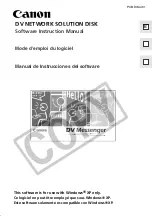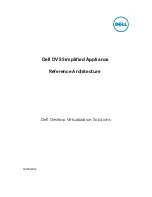
9.6 8260 Dual Fiber Repeater Module
This is a single slot module that supports 10 active lobe ports and two sets of
fully repeated fiber RI/RO trunk ports. This is a per-port switching module, which
means that any of the lobe ports or and trunk port sets can be assigned to any of
the backplane segments. The main features of this module are:
•
10 lobe ports with shielded RJ-45 connectors.
•
Each lobe port has its own DPLL, which actively re-times and re-generates
the signal on that port. This provides longer lobe distances on both UTP and
STP. For information of the maximum lobe distances, please refer to
Table 26 on page 143.
•
Each lobe port can be connected to one of the 10 token-ring segments on the
ShuntBus or one of the 11 isolated segments on the module.
•
2 sets of fully repeated fiber RI/RO trunk ports with ST connectors.
•
Each trunk port is fully repeated and supports multimode fiber connections
for 62.5/125 fiber at distances up to 2 km.
•
Each set of trunk ports can be assigned to one of the 10 token-ring segments
on the ShuntBus or one of the 11 isolated segments on the module.
Note:
The lobe and trunk ports can be assigned to a maximum of 11
backplane or isolated segments. When you use a backplane (or isolated)
segment the equivalent isolated (or backplane) segment is not available. For
example if one or more ports are assigned to token_ring_1 segment, no port
can be assigned to isolated_1 segment.
•
Simultaneous UTP and STP cabling is supported on the lobe ports attached
to the same or different segments.
•
Support for beacon recovery on both lobe and trunk ports using the
Recovery ASIC which is implemented on the module.
•
Support for address-to-port mapping using the recovery ASIC.
•
Support for fan-out devices and splitters for attaching up to 8 stations to each
port. Note that the fan-out device or the splitter is required to provide a
phantom signal; therefore, the 8228 cannot be used as a fan-out device with
this module.
•
Support for connection of MAC-less stations (such as token-ring tracing
tools) to all the lobe ports.
•
Automatic speed detection of the attached stations to the lobe ports, so that
only the stations with the correct ring speed settings can attach to the
network.
•
Simultaneous support of 4 and 16 Mbps token-ring networks on the lobe and
trunk ports.
•
Compliant with the 802.5C (dual-ring recovery) on the trunk ports.
•
Support for installation of one T-MAC.
•
Support for installation of two Jitter Attenuator daughter cards.
Chapter 9. 8260 Token-Ring Modules
185
Summary of Contents for Nways 8260
Page 2: ......
Page 6: ...iv 8260 Multiprotocol Intelligent Switching Hub ...
Page 16: ...xiv 8260 Multiprotocol Intelligent Switching Hub ...
Page 22: ...xx 8260 Multiprotocol Intelligent Switching Hub ...
Page 34: ...12 8260 Multiprotocol Intelligent Switching Hub ...
Page 50: ...28 8260 Multiprotocol Intelligent Switching Hub ...
Page 56: ...34 8260 Multiprotocol Intelligent Switching Hub ...
Page 94: ...72 8260 Multiprotocol Intelligent Switching Hub ...
Page 112: ...90 8260 Multiprotocol Intelligent Switching Hub ...
Page 118: ...96 8260 Multiprotocol Intelligent Switching Hub ...
Page 194: ...172 8260 Multiprotocol Intelligent Switching Hub ...
Page 212: ...190 8260 Multiprotocol Intelligent Switching Hub ...
Page 336: ...314 8260 Multiprotocol Intelligent Switching Hub ...
Page 340: ...318 8260 Multiprotocol Intelligent Switching Hub ...
Page 350: ......
Page 353: ......
















































